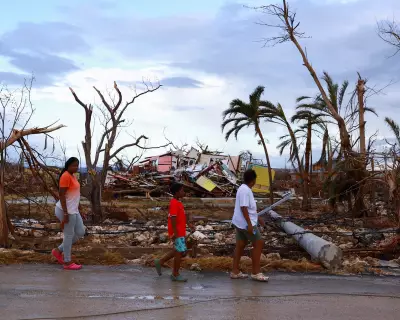
Climate Summit Websites Accused of Significant Carbon Footprint
Websites promoting the United Nations' Cop climate summits have been found to produce approximately seven times more carbon than the average website, according to a new academic study. Researchers from Edinburgh College of Art's Institute for Design Informatics uncovered that while the internet accounts for around 3% of global emissions, the official Cop host country websites have a disproportionately large digital carbon footprint.
Staggering Increase in Emissions Over Three Decades
The analysis, which used web archive data to track changes over a 30-year period, revealed a dramatic escalation. Between the first Cop summit in 1995 and Cop29 in 2024, the average emissions from these websites skyrocketed by more than 13,000%.
Emissions remained relatively minimal until Cop14 in 2008, with sites emitting the carbon equivalent of just 0.02g per page view. However, a sharp increase began from Cop15 onwards. The research indicates that pages now emit an average of more than 2.4g of carbon per visit, with some individual pages emitting substantially more. For context, the average website emits just 0.36g of carbon per page view.
The environmental impact is stark when visualised. During Cop3 in 1997 – the first year with available data – website views emitted roughly 0.14kg of carbon, an amount a mature tree could absorb in two days. In a shocking contrast, the 116.85kg of carbon emitted from Cop29 homepage visits alone would require up to 10 mature trees a full year to absorb – representing an increase of over 83,000%.
Causes and Recommended Solutions
Experts attribute this surge to Cop pages increasingly incorporating content that demands greater computing power, such as high-resolution images and multimedia files. The upcoming Cop30, scheduled for Brazil between November 10 and 21 this year, is already under scrutiny as experts confirm it is not hosted on verified renewable energy infrastructure.
The research team has proposed concrete steps to mitigate this issue. Recommendations include placing strict limits on page sizes, optimising site layouts for efficiency, and crucially, hosting websites on servers powered by renewable energy.
Professor Melissa Terras of the Institute for Design Informatics stated that the digital footprint of websites deserves more scrutiny. "Our research shows that the carbon cost of digital presence is often overlooked by even those who care about, and are meant to protect, the environment," she said. The team hopes their recommendations will help institutions identify and tackle this growing problem.
This study, published in the journal PLOS Climate, is noted as the first to use web archives to track the environmental impact of websites over time.





